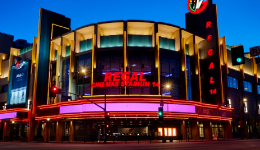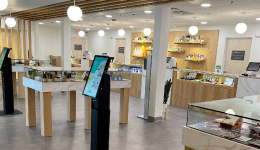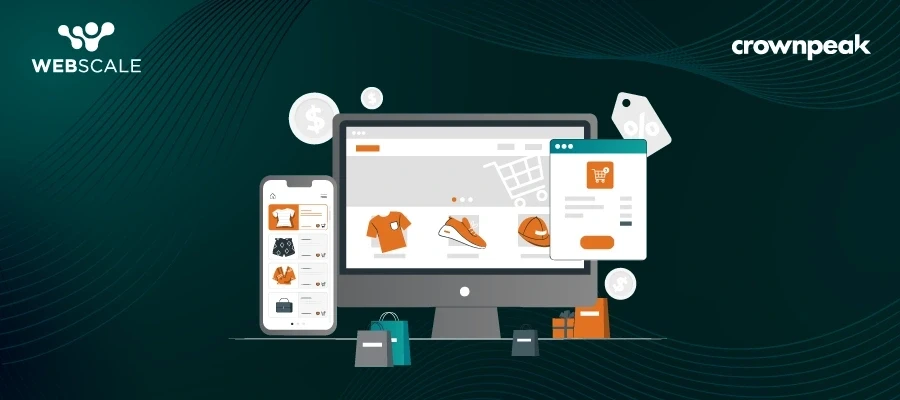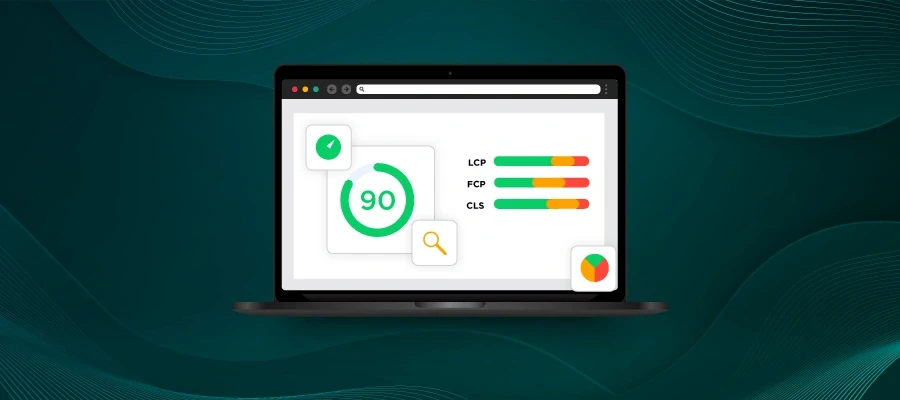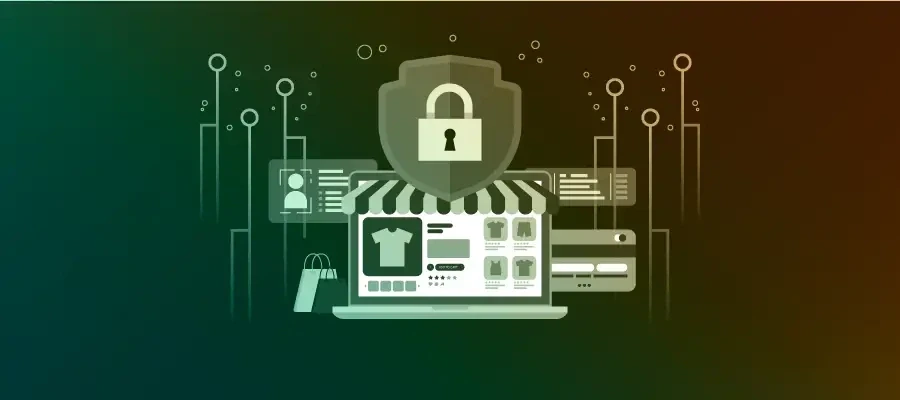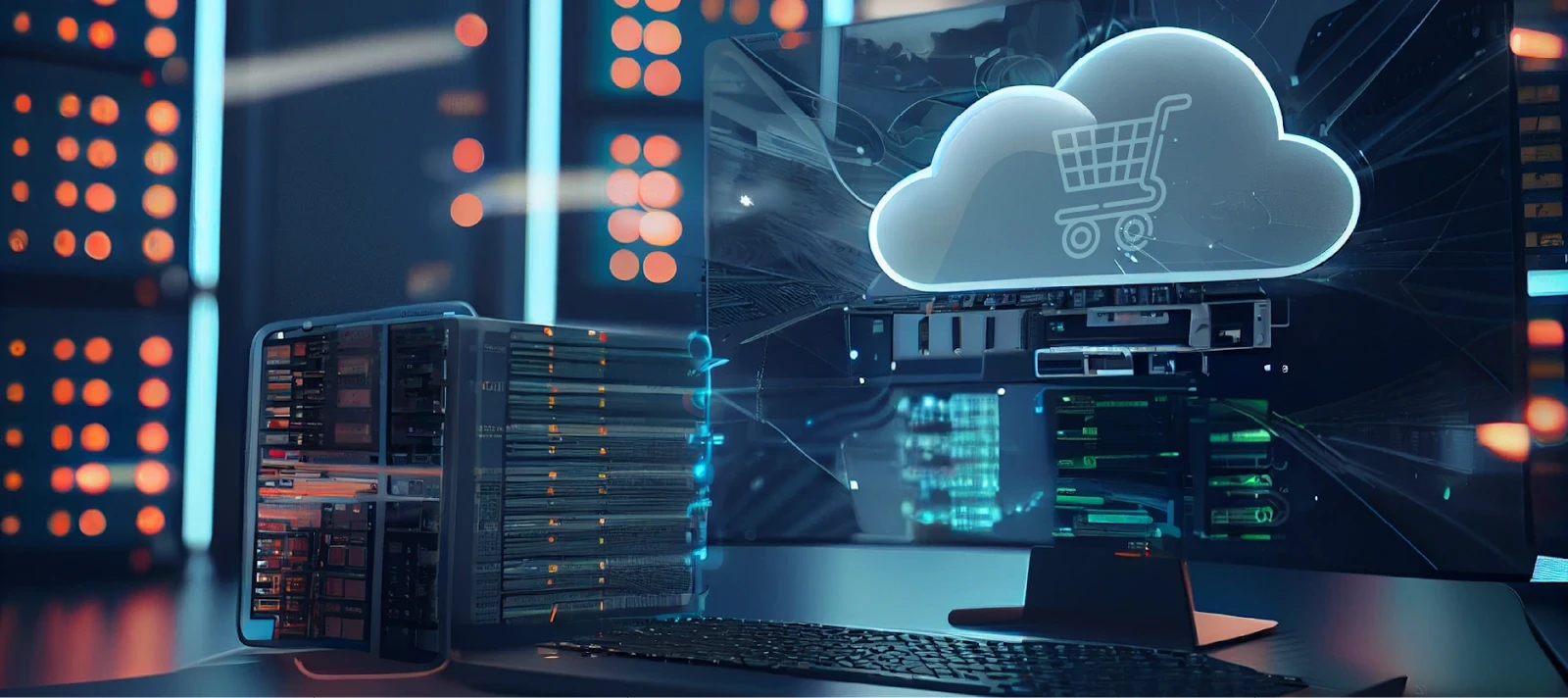Andreas Knoor is the Chief Product Officer of Crownpeak.
In September 2021, Crownpeak announced a strategic partnership with Webscale, which is now the preferred cloud delivery engine for Crownpeak customers.
I sat down with Sonal Puri, CEO of Webscale, to discuss how both companies are collaborating to bring Crownpeak’s content-driven headless commerce solution, powered by Webscale’s robust cloud delivery platform, to address the needs of ecommerce merchants for scale and flexibility to grow their business.
Read on to learn how headless ecommerce platforms give high-growth B2C and B2B companies the power to quickly innovate and compete for customer retention. Click here if you’d like to watch the recorded session.
In a mobile-first world, digital leads the way in commerce growth
Andreas: Let’s set the stage by talking about what we’re seeing broadly in the industry in terms of ecommerce. There’s been tremendous growth, just over the last two years.
Sonal: And, alongside that, consumer habits have also evolved. Online commerce grew by about 14 percent in 2019 to 20 percent or more in 2021, and we expect it to continue growing at a rapid rate because of consumers’ familiarity and experience with ecommerce. It’s such an effective way to get in front of new consumers, so we’re seeing a lot more spending in this space.
Andreas: We often think of the countries with large economies as driving this growth, but the shift to digital and ecommerce truly is a global phenomenon.
Sonal: It certainly is, and that’s largely because of mobile commerce. In the developing world, you don’t often have broadband connections at home because of the lack of infrastructure. In these regions – as well as the rest of the world – mobile is seeing the biggest growth.
Worldwide, mobile has grown by about 20 percent. That means the user experience on mobile is critical. Whether it’s content or speed of delivery, there’s a lot of focus on the mobile buyer now.
Overall, half the world is online and shopping. And we want to encourage ease of consumption. We want these consumers to benefit from the technological advances that we see from some of the largest brands in the industry.
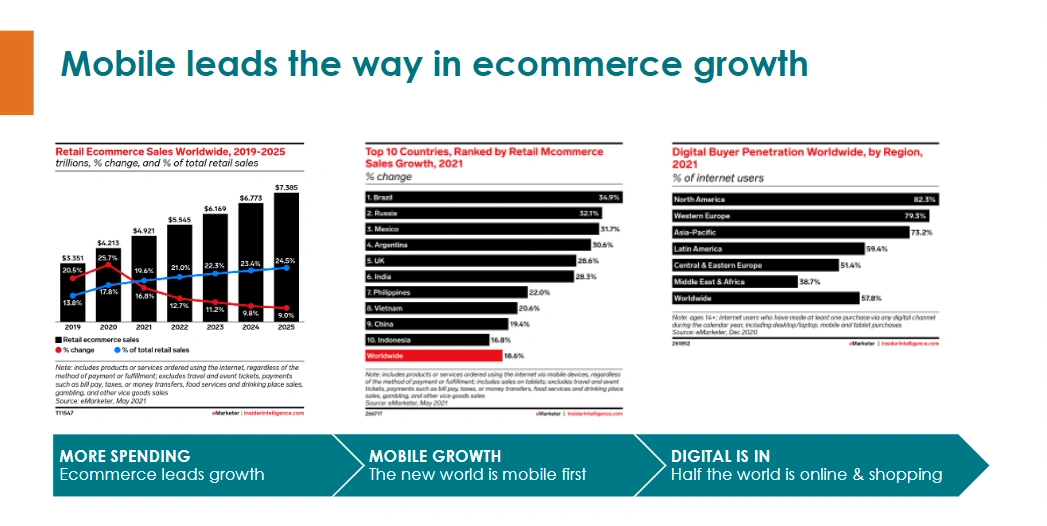
Commerce in 2022 and beyond: Moving from customer acquisition to customer retention
Andreas: The emphasis – with companies of any size and for any type of product, such as B2B, B2C, and companies that provide infrastructure to larger brands – has shifted from making an upfront sale to customer retention.
Sonal: Three to four years ago there was a push around customer acquisition but businesses quickly realized that this leads to a “leaky bucket,” as customers are fickle, and, in large part, because brands are not well differentiated in commodity spaces. Consumer retention is becoming a more critical aspect for these brands and there are multiple ways to drive consumer retention:
- Speed: Twenty-plus years of research have clearly shown that if your site is not fast, the consumer will leave. Search rankings are also becoming a part of this. If you look at new areas of focus like Google’s Core Web Vitals, a slow site will not show up on Google search rankings, and so the consumer will not be able to find you.
- Security: If you want to retain a customer you have to have their trust and maintain compliance to process their credit cards and keep them coming back.
Affordability: We all know how difficult the margin game is for businesses. It’s a race to acquire and keep a customer, and affordability is a key piece of this.
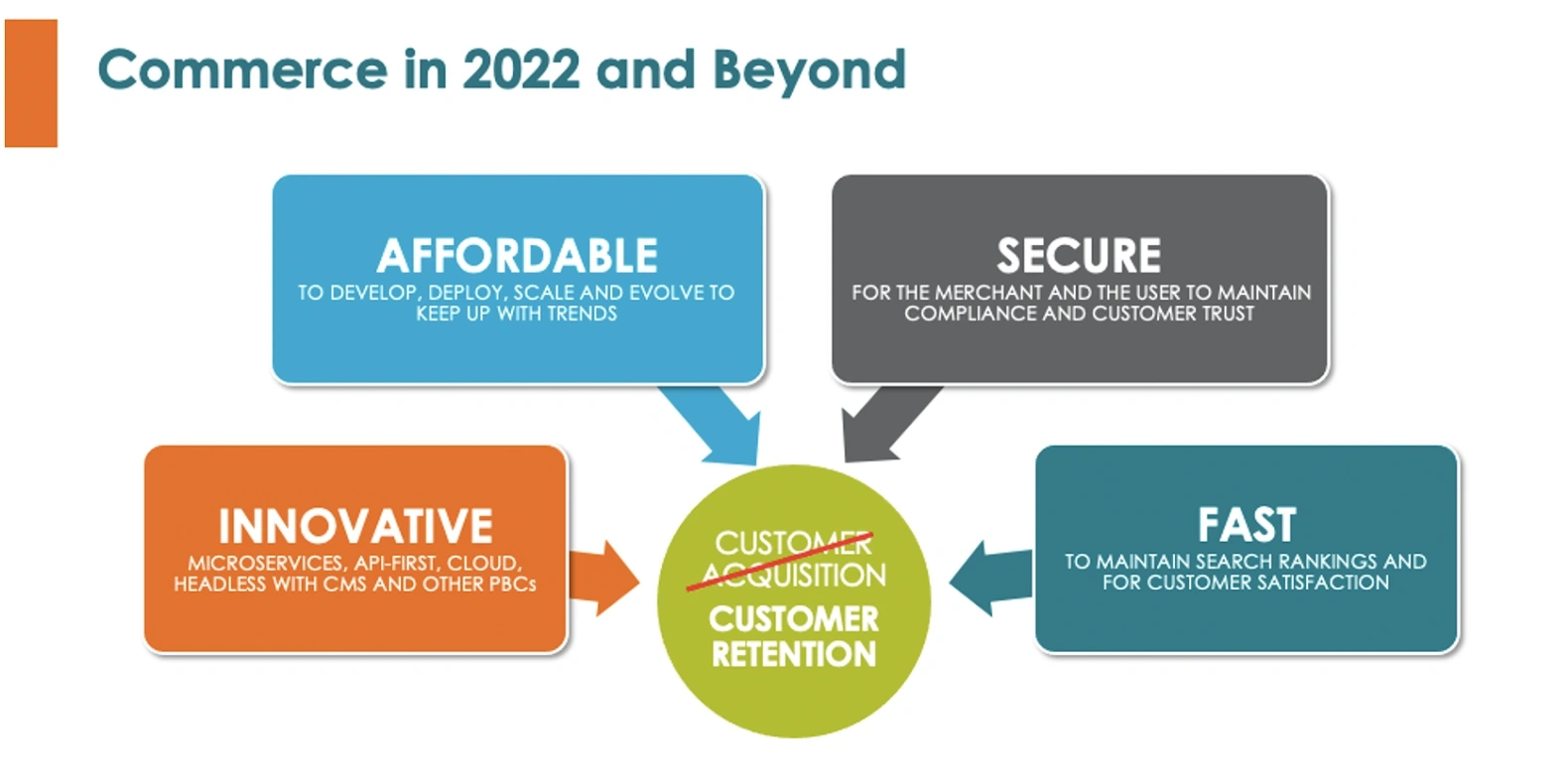
Content-driven headless commerce is critical for brand differentiation
Andreas: Another key question for companies is: how do I differentiate my brand from the Amazons of the world? This comes down to content-driven commerce. Essentially, it’s what makes the buying experience of a particular company unique for customers or better than the buying experience of its competitors.
Content-driven commerce is about designing and orchestrating the full buying experience and not just focusing on the transaction. For example, Apple’s webshop is all about visual representation and professionally telling stories about their products. Content will help you to stand out and it is the number one differentiator for most consumers.
 “Content-driven commerce is what makes the buying experience unique for customers, and better than the buying experience of its competitors.” – Andreas
“Content-driven commerce is what makes the buying experience unique for customers, and better than the buying experience of its competitors.” – Andreas
While this applies to B2C commerce scenarios, we are also seeing that a direct-to-consumer (D2C) strategy is getting more important and relevant nowadays for B2B companies. That’s why content is so important and needs to be a critical part of the ecommerce strategy.

How headless commerce architecture is changing the way brands meet consumer demands and desires
Andreas: The most important change we’re seeing is around how some of the largest brands are driving innovation – specifically, going with a headless content-driven commerce architecture. This allows you to make changes faster to your site and pivot to meet consumer trends and desires. Is this what you are seeing as well?
Sonal: Definitely. A headless ecommerce platform allows you to add features quickly like setting up new payment gateways or new ways of fulfillment, such as “buy online/fulfill in-store” or “buy now/pay later.” It may be difficult for merchants that have a monolithic CMS to innovate fast and compete on that same level. The market is going in the direction of composable packaged business capabilities (PBCs), or microservices, and that means being more API-first. All these new features and functions that are coming to the market are easily integrated using headless commerce APIs. Applications have to accept those APIs and work with them. That requires a significant change, but not necessarily a “rip and replace.” It’s an evolution, but it requires brands to think about the cloud as the place to be for ecommerce. This includes headless deployments with content management systems and other PBCs.
 “Ultimately, fast and secure sites, affordable products, and getting in front of consumers through innovation are all key to commerce in 2022 and beyond.” – Sonal
“Ultimately, fast and secure sites, affordable products, and getting in front of consumers through innovation are all key to commerce in 2022 and beyond.” – Sonal
Monolith vs. Microservices: Moving towards a headless commerce API-first environment
Sonal: Monolith versus microservices feels like a giant tug of war. In our opinion, merchants don’t have to choose one or the other because there’s a place for both. As I mentioned earlier, it’s not a “rip and replace” of an existing ecommerce platform but rather an evolution. And starting with a headless commerce architecture and then expanding into more PBCs is a good way to evolve slowly from an absolute monolith, or one-stop-shop, towards an API-first environment.
Andreas: I couldn’t agree more. What we see in the market is around 80+ percent of all the existing ecommerce implementations are using monolithic architecture. In this type of approach, the transactional activities, user experience, user interface, and the delivery of the end-user experience all occur within the monolith. If you want to go beyond the limitations of your vendors’ PBCs and adopt content-driven commerce, a story-driven approach you also need a headless commerce content management system that is seamlessly integrated into the platform and delivers the right content and transactional functionality to the end-user.
Sonal: If we look at the monolithic approach, there are some advantages. A monolithic system is a very stable, mature technology, including content management integrations. Typically, these types of platforms have low operating costs and are easy to test and debug.

Andreas: There are disadvantages too, especially from an end-user experience perspective. If customer experience is your number one priority, then you will want to use the latest and greatest front-end technology. And that can be hard to implement in a monolithic environment because you are tied to the system’s ecommerce shop front-end technology, which is handling all the interactions with the consumers.
A reasonable alternative here is to go with a headless architecture, which allows you to decouple the ecommerce platform and content management system from the actual delivery, or “head” which creates the full user experience. Crownpeak’s headless CMS is at the center of our content-driven commerce solution enabling a composable, headless commerce API-driven approach. This allows for much more agility and flexibility regarding system updates or changes, and you don’t have to be locked into one vendor, especially with so many great headless commerce providers in the market. Having the freedom of choice, particularly for the front-end technology, typically creates a much better user experience from a desktop and mobile perspective.
 “Crownpeak’s headless CMS is at the center of our content-driven commerce solution enabling a composable, headless commerce API-driven approach.” – Andreas
“Crownpeak’s headless CMS is at the center of our content-driven commerce solution enabling a composable, headless commerce API-driven approach.” – Andreas
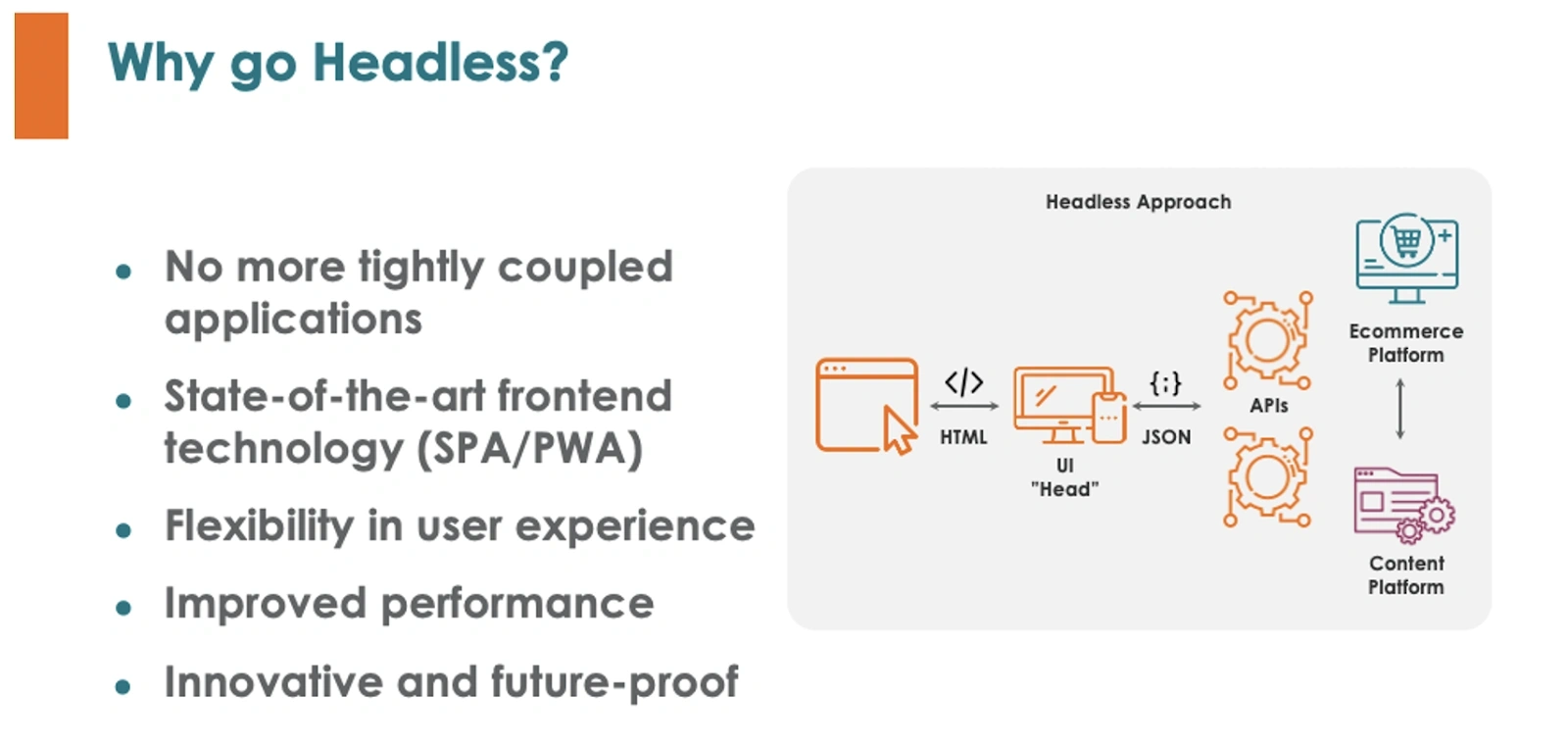
The building blocks of a headless commerce SaaS architecture
Sonal: Think of headless as a Lego set where you can choose what tools and vendors work best for you. Let’s break down the categories that explain how this landscape is set up.
- Ecommerce platforms: These are traditional, well-known brands that typically provide a monolithic architecture. Some may be open-source, others may have expensive licensing that requires deep expertise, and some of them are more of a DIY approach where a company creates their commerce store.
- Security/CDN delivery: We all know that wherever there are transactions, revenue and currency, there are also the bad guys. So, we have to make sure that there’s security available to protect merchants. Webscale provides a “serverless” experience to deliver CDN and security capabilities both at the origin and the edge.
- Composable stack: This category has a lot of new players that talk about headless as “the” way to deliver. They typically provide the tools to make a very successful bid at a headless build; however many merchants don’t have the in-house expertise to use those tools effectively. Webscale provides the glue that brings some of these tools together and because it is a composable stack, the merchant can pick and choose. It’s almost like going into a buffet and choosing what you want to eat, but then somebody needs to cook it for you.
- Packaged business capabilities (PBCs): Think of this as pre-packaged microservices provided by a vendor, allowing a merchant to put all the pieces together and be API-first. For example, Crownpeak does a very successful job of pre-packaging the content management system for content-driven commerce, whether it is for monolithic applications or headless applications. It is a great way to transition from one to the other or to stay where you are. This area is where we expect to see the most advancement in the industry. We anticipate that newer players will come to the table with PBCs and instead of saying, “here are the tools, go do it yourself,” they will say “here are the PBCs, learn our APIs, get integrated, and let’s make you successful.”
- PWA frameworks: Progressive Web Application (PWA) frameworks provide the ability to build a fast, interactive front-end that can serve mobile and desktop. Whichever way the user chooses to visit your storefront, they get the right experience, and it integrates and interacts through APIs with the backend. Webscale’s CloudEDGE PWA offering enables merchants to deliver secure PWA commerce experience in minutes.
- Front-end optimization: Think of this as a new name for a type of CDN that does several interactive pieces for commerce brands. Webscale delivers a front-end optimization platform in a multi-cloud format that makes it easy for merchants to interact and work with any of the choices that they might make.
 “Webscale delivers a front-end optimization platform in a multi-cloud format that makes it easy for merchants to interact and work with any of the choices that they might make.” – Sonal
“Webscale delivers a front-end optimization platform in a multi-cloud format that makes it easy for merchants to interact and work with any of the choices that they might make.” – Sonal
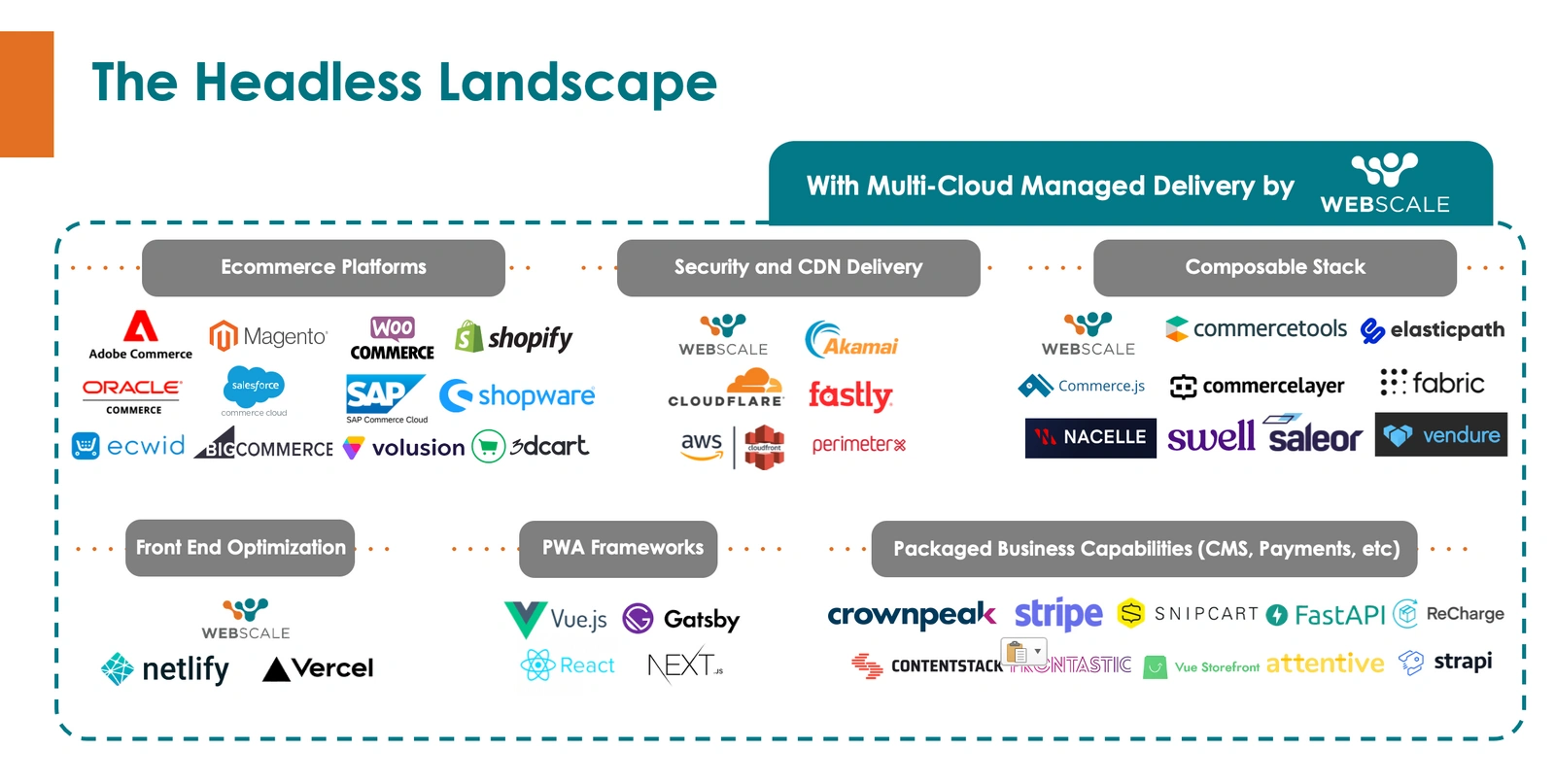
Andreas: So, what could this look like in real life? We can start with simple headless commerce examples. Let’s say you want to go headless with a content-driven approach. We have three critical components, which I would call the headless content and commerce triangle.
- Front-end UI: You can buy the front-end UI from a vendor (examples in image) and use a front-end as a service provider. You can also develop this from scratch, depending on your requirements.
- Headless commerce system: Next up is the headless commerce system. There are pure headless systems and hybrid solutions from headless commerce providers, such as Salesforce or SAP, that can be used in either a monolithic or headless manner.
- Headless CMS: Last but not least, you need to have a content management system in play. It can be a pure headless player or a hybrid headless solution like Crownpeak. So if you want to implement a futureproof headless B2B commerce and content strategy, this is a solid architectural foundation. And the different parts should be easily interchangeable like the Lego bricks Sonal mentioned earlier.
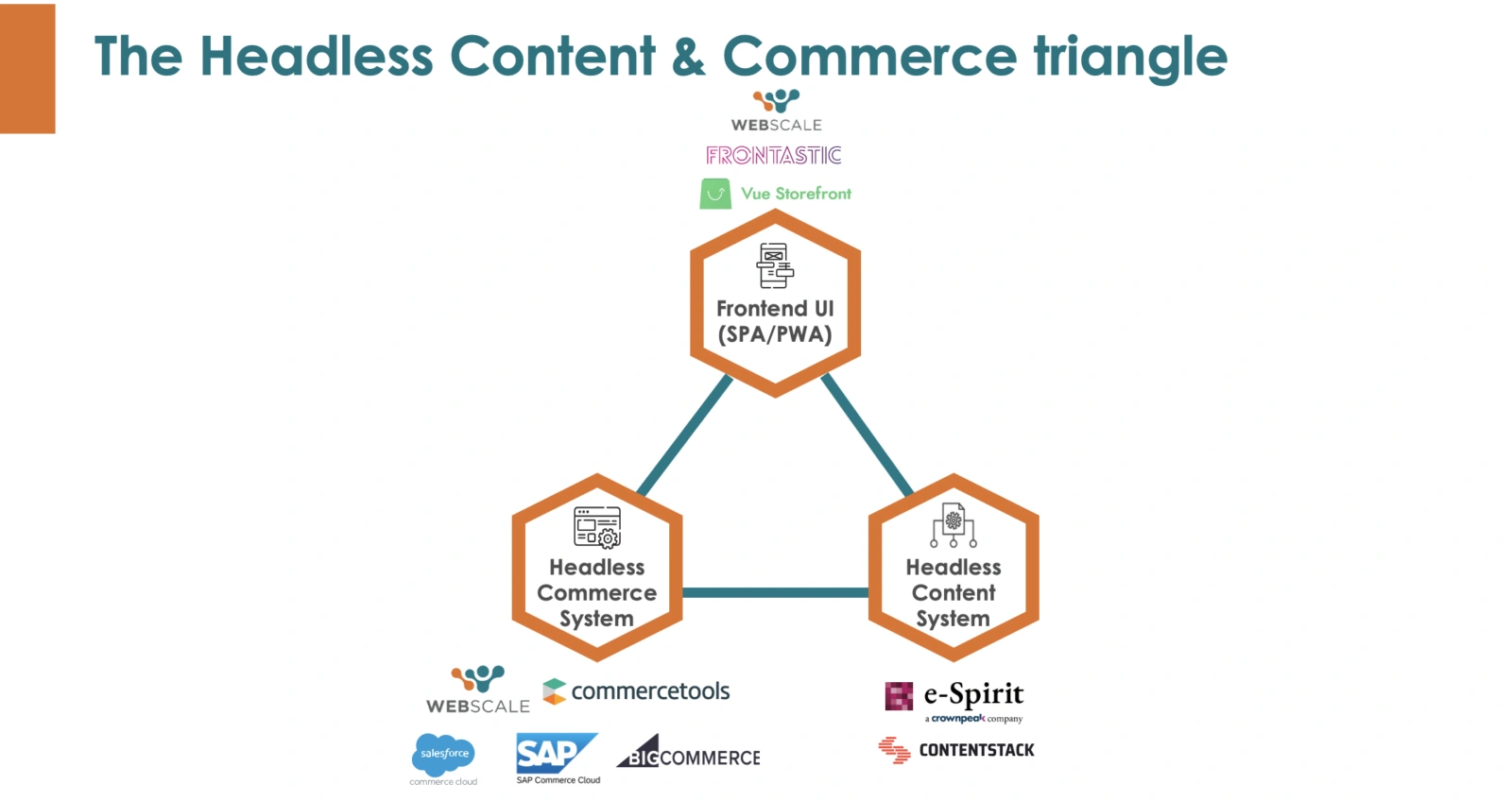
The future looks bright: Moving forward with headless commerce providers Webscale and Crownpeak
Sonal: To wrap up, why Webscale and Crownpeak? Because we’re cool people and love to work together! But beyond that, content-driven commerce is the future and headless architecture is very clearly growing in popularity. At the end of the day, we want to make sure we are partnering with the right group of individuals and companies to make it easy for our customers to deliver on this futuristic vision. We want online and mobile commerce to be 50 percent of all retail, because, after experiencing the flexibility and ease of shopping online, who wants to go back to a crowded mall?
Want to learn more about headless content-driven commerce, and how Crownpeak Delivery Powered by Webscale provides the power, flexibility, and security you need to grow your ecommerce business? Speak to an expert, today
Want to take a deeper technical dive into headless commerce architectures for B2B content-driven commerce? Read our related blog here.


